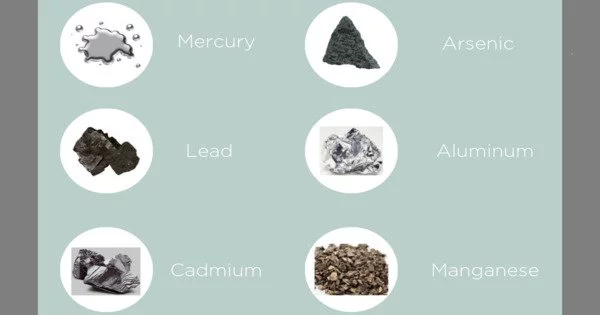A toxic heavy metal is any relatively dense metal or metalloid with a high potential for toxicity, particularly in environmental circumstances. It refers to a class of metallic elements with high atomic weights that are known to be harmful to living creatures. The word refers specifically to cadmium, mercury, and lead, which are all on the World Health Organization’s list of ten substances of serious public concern.
Manganese, chromium, cobalt, nickel, copper, zinc, silver, antimony, and thallium are some other examples. These metals can occur naturally, but they are also discharged into the environment as a result of human activity such as industrial processes, mining, and waste disposal. When they accumulate in the environment or enter the food chain, they can pose serious health risks to humans and other organisms.
The toxic effects of arsenic, mercury, and lead were known to the ancients, although careful investigations of the toxicity of particular heavy metals do not appear to extend back any further than 1868. Chelating drugs are typically used to treat heavy metal toxicity in humans. Some elements that are typically considered harmful heavy metals are required for human health in trace amounts.
Some common toxic heavy metals include:
- Lead (Pb): Lead exposure can lead to neurological, developmental, and cognitive impairments, particularly in children. Sources of lead exposure include lead-based paint, contaminated water, and industrial emissions.
- Mercury (Hg): Mercury primarily affects the nervous system and can cause brain and kidney damage. Fish and seafood consumption is a common route of mercury exposure.
- Cadmium (Cd): Cadmium exposure can lead to kidney damage and is associated with an increased risk of certain cancers. It is often released into the environment through industrial processes and tobacco smoke.
- Arsenic (As): Arsenic exposure can lead to skin, lung, and bladder cancer, as well as cardiovascular and neurological effects. Arsenic can be found naturally in the earth’s crust or released through mining and industrial activities.
- Chromium (Cr): Hexavalent chromium is a known carcinogen and can cause respiratory problems and skin irritation. It is used in various industrial processes.
Heavy metals are naturally occurring in the earth. They get concentrated as a result of human-caused activities and can penetrate plant and animal tissues (including human) through inhalation, food, and manual handling. They can then bind to and disrupt the function of critical biological components.
Toxic heavy metal exposure can occur as a result of ingesting, inhaling, or coming into touch with contaminated air, water, soil, or consumer products. To protect human health and limit exposure risks, regulatory organisations and environmental agencies seek to monitor and control the release of certain metals into the environment.
















